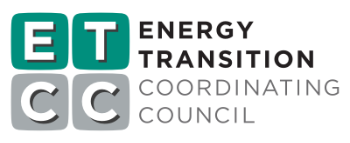Project Info
COMPLETE
 Project Title
Project Title
 Project Title
Project Title
Industrial Heat Pump Market Study
Project Number ET23SWE0036 Organization SWE (Statewide Electric ETP) End-use Process Loads Sector Industrial Project Year(s) 2023 - 2023Project Results
To date, less than five percent of process heat uses electricity, generally relying more on fossil fuels (Rightor et al., 2022). The industrial sector, which includes process heat, accounts for more than 25 percent of greenhouse gas (GHG) emissions in the United Sates (U.S.) with 50 percent of thermal energy being produced on-site (U.S. EIA, 2021a). This report outlines the findings for a market study on industrial heat pumps (IHP). Although IHP installations are growing around the world, especially in Europe, Japan, and Australia, there are few installations in the U.S. This presents a large growth opportunity for this technology across multiple industries and applications as proliferation of IHPs can directly impact GHG emissions.
Heat pumps have wide applicability to industrial process loads. However, the efficiency of heat pumps declines as temperature lift increases thereby limiting target industries for IHPs because of the high process temperature requirements. Currently, commercially available IHPs can supply temperatures up to 165°C (329°F) and approximately 35 percent of industrial heat processes fall within this range (Arpagaus et al., 2017) (Rissman, 2022).
This study investigated IHP applications for eleven industrial subsectors including meat processing, dairy, beer, canned vegetable and fruit processing, cane sugar refining, beet sugar, corn wet-milling, soybean oil, textiles, pulp and paper, and automotive industries. The evaluation was performed based on the Lawrence Berkeley National Laboratory’s analysis, which estimated IHP potentials using two scenarios: a conservative use case and aggressive use case (Zuberi et al., 2022). The conservative case considered only high temperature heat pump (HTHP) applications, requiring process temperatures less than 100°C (212°F) and boiler pre-feed. The aggressive case considered both HTHPs and steam generating heat pumps (SGHPs).
The total U.S. potential IHP heating capacity was found to be 9,870 MW and 21,726 MW for HTHP and SGHP, respectively. (Zuberi et al., 2022) From the industries analyzed, California contributes approximately seven percent of the total potential IHP heating capacity of the U.S. with a total potential IHP heating capacity of 1,051 MW and 1,069 MW for HTHPs and SGHPs, respectively.
As California continues to decarbonize its grid, both HTHPs and SGHPs have the potential to be part of the industrial sector electrification solution to meet net-zero emissions goals. Furthermore, if electricity is supplied to IHPs from zero-emissions sources, a significant amount of heat can be considered emissions-free.
This report reviewed the status of the technology by identifying current demonstrations and IHP manufacturers. Industry experts and manufacturers were interviewed to obtain additional information about the market, high value applications, market adoption drivers, market challenges and barriers, and future developments. Additionally, recommendations for utility program pathways were summarized from the findings. IHP technology and industrial markets are both evolving at a rapid pace, so this report may not address all current issues or opportunities in the marketplace.
Project Report Document
Loading PDF Preview...
